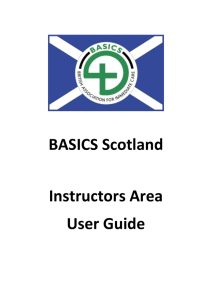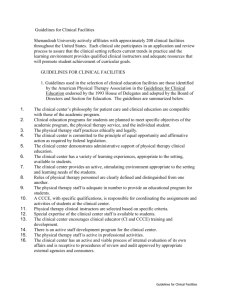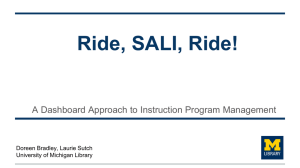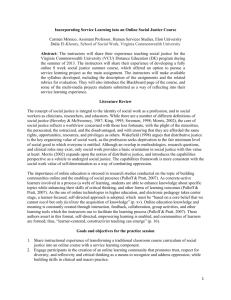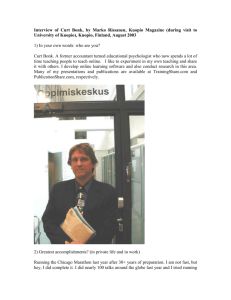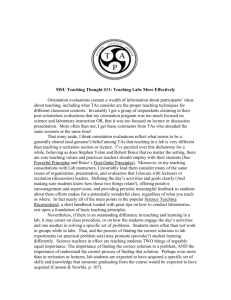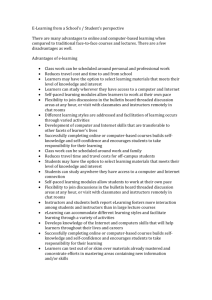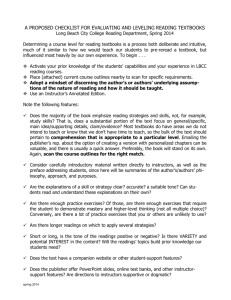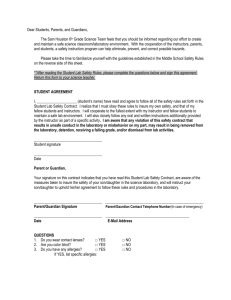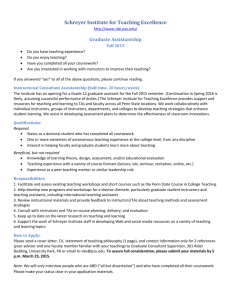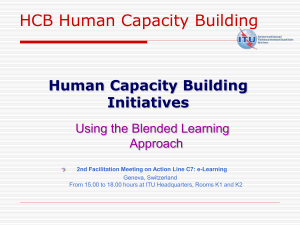WattsSEL7001-8-6bgraded
advertisement
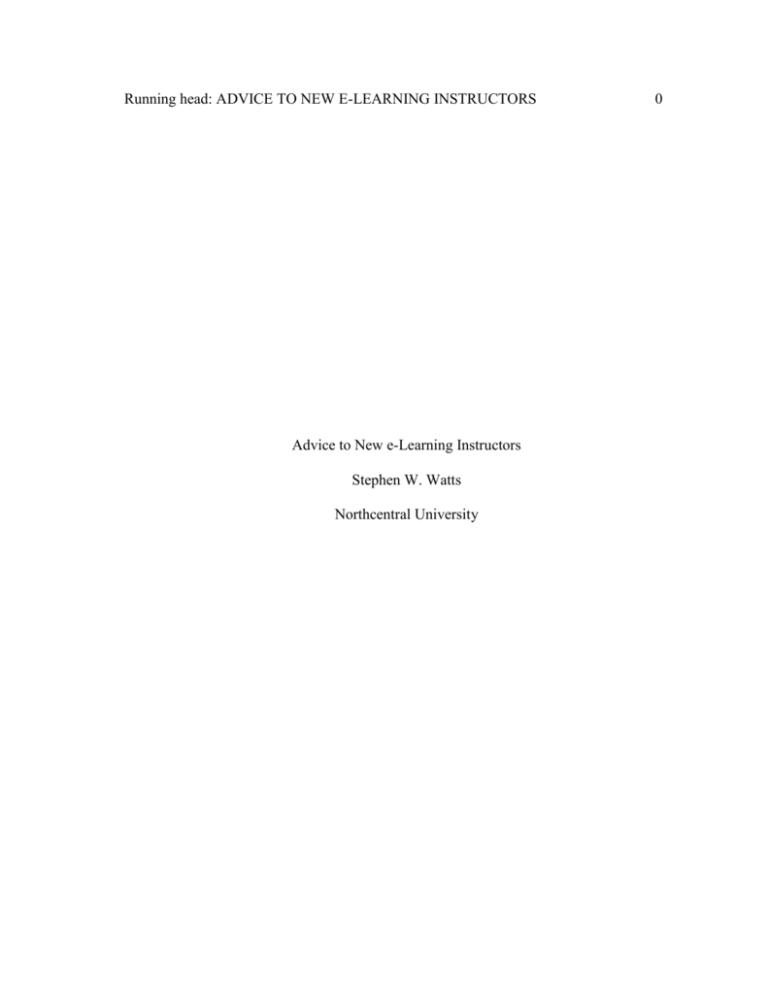
Running head: ADVICE TO NEW E-LEARNING INSTRUCTORS Advice to New e-Learning Instructors Stephen W. Watts Northcentral University 0 WattsSEL7001-8-6 1 Advice to New e-Learning Instructors I have taught and mentored students and instructors on the system that I have described in my slides. The reason that I selected the advice that I presented is because this is truly the advice that I have and will continue to give. I understand that many e-learning environments are not this robust. I work for a US-based Fortune 100 Technological Company, and the business model of this company is to provide the best quality software, hardware, and training that the customer is willing to buy. In this particular seminar, the audience is currently active and well trained technology instructors in various languages, applications, and tools. This means that they need to know three things. They need to know what is expected of them, and the tools that they will be using to meet those expectations. I would have added a couple of slides between slide four and five to show what the WebEx tool looks like, the various communication features that are incorporated in it, and instruction on each of their use. I did not do so because every picture I have of the tool has several logos of the company on them, and would not be appropriate for this assignment. These instructors need to connect what is new with what is already known. We do use Gagne’s model in our training, and my middle section is step three of the model. Finally, I introduced the new content in the form of how the instructors will have to adapt their pedagogy to this new medium for training. The thoughts that I presented through the slides are designed to give each instructor some space to be able to think, and to piece together their feelings and thoughts on what is being presented to them. It is also designed to engage and encourage them to remember to strive to be better. All of us need to recharge our teaching batteries sometime and be reminded the reason we got in the field in the first place. WattsSEL7001-8-6 2 Supportive Evidence While it would be the truth to say that the supportive evidence for the advice that I’ve given in this presentation is that I get paid very well to mentor others in how to do this very thing, and to present online classes using this very advice and pedagogy for which I receive extremely high marks for customer and student satisfaction, I don’t suppose that is what is being asked for in the assignment. Broadbent (2002) identified Gagne’s model as a “solid framework for developing and delivering e-learning” (p. 115). She also identifies that the techniques that I identified for instructors to continue doing, e.g., interactive techniques, nurturing the relationship between instructor and learner, and modeling of participative behavior are effective in e-learning. I did not provide many specific techniques that will need to be modified for the very reason that when I mentor instructors I focus on the techniques that instructor has found helpful in the classroom, and work with them to tailor those for their use online. The pacing of elearning has been noted by many authors, including Broadbent (2002). The remainders of the advice are specific factors that we have to work with and have come from a couple of sources (Maeroff, 2003; Palloff & Pratt, 2001), but mostly through personal experience. Effectiveness of Format A better format for this particular assignment would have probably been a podcast demonstrating the new environment, the technical tools that are available, and the techniques discussed to these new instructors. I did not choose that format for a couple of reasons. First, I did not have access to the tool or an environment, and secondly, I did not have a good quality video camera to do a decent job. As the second best alternative for this presentation I chose PowerPoint because it allows me to convey a good amount of information, add interest grabbing visuals and transitions, in a WattsSEL7001-8-6 3 simple and easily understood format. This format also allows for questions and discussion as the seminar proceeds, and the facilitator can share personal experiences that clarify or enhance what is conveyed in the slides, and in the notes. I also chose this format in order to be exact in following the specifications of the assignment which indicated that I should “save the file as PPT with the correct course code information”. Conclusion Since this assignment was entitled a reflective essay I have been more relaxed in my prose and in my examples. This does not belittle how important it is for instructors who are going online to know that there are, at least in the world of e-learning where I live, many similarities in process, and framework between a traditional classroom and a virtual one. They must also come to know that while they are similar, they are not exactly the same. There are a thousand small adjustments between the two pedagogies, and my number one piece of advice is to be present and attentive to the needs of the students, regardless of where those students are, and regardless of what medium you are using to communicate information to them. WattsSEL7001-8-6 4 References Broadbent, B. (2002). ABCs of e-learning: Reaping the benefits and avoiding the pitfalls. San Francisco, CA: Jossey-Bass/Pfeiffer. Maeroff, G. I. (2003). A classroom of one: How online learning is changing our schools and colleges. New York, NY: Palgrave Macmillan. Palloff,R. M., & Pratt, K. (2001). Lessons from the cyberspace classroom: The realities of online teaching. San Francisco, CA: Jossey-Bass Inc.
